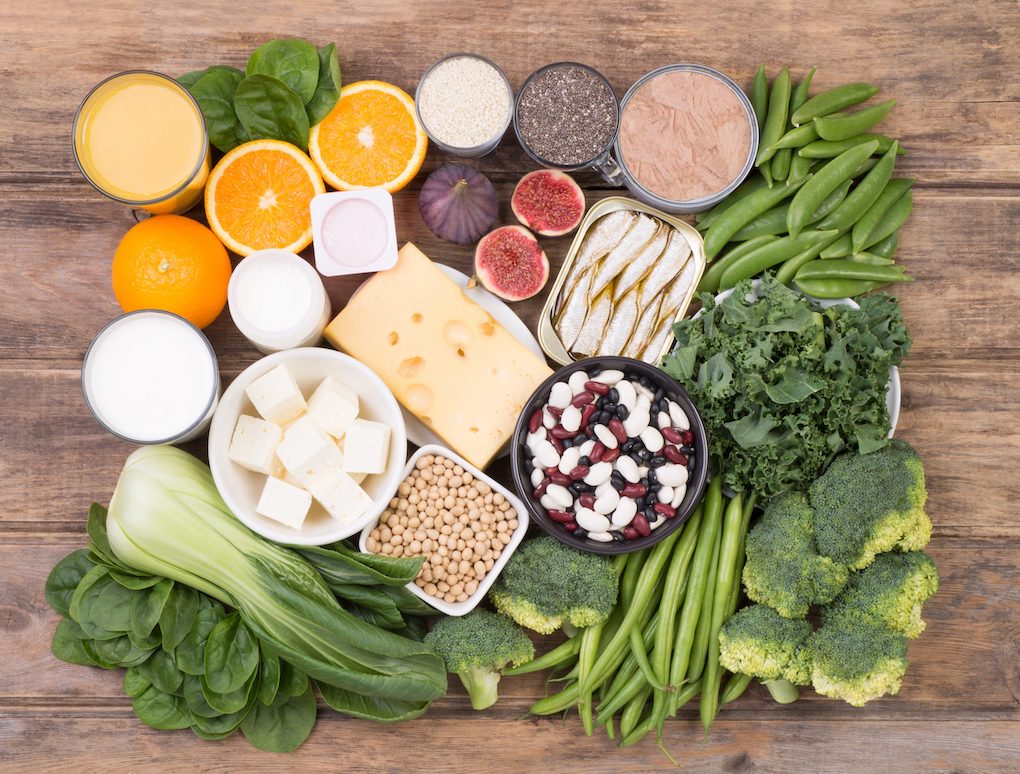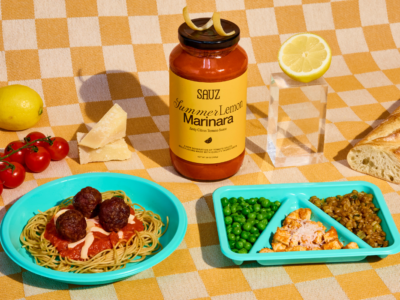We know nutrition is SO crucial during the first few years of life as it plays a major role in growth and development and can set your little one up for a lifetime of health. But beyond feeding our littles the nutrients they need to grow and thrive, it’s important that they’re getting the right amounts of these ever-important foods like protein, fiber, veggies, and healthy fats.
So what should your kiddo be eating? For children two and above, the Dietary Guidelines for Americans recommends that they follow a general healthy eating pattern similar to what is recommended for adults: lots of fruits and veggies, healthy sources of protein, whole grains (verses overly processed, refined options) and healthy fats like extra virgin olive oil (1). The guidelines also recommend no or low-fat dairy products, although I personally feel that more and more research shows that eating whole fat versions in mindful quantities is more than fine. Full-fat dairy allows us to absorb more of the benefits from fat-soluble vitamins and other nutrients present in the meal, and can make us feel more satisfied.
The guidelines also recommend limiting trans fats, added sugars and sodium. All of these foods, in excess, can contribute to high blood pressure, one of the leading causes of heart disease.
When it comes to specific nutrients–like fiber, fat, and protein–what is best for you or your little one truly depends on the individual and their age. It is always best to speak with your health care provider to see what is best for your child, but below are some general guidelines to keep in mind!
Fiber
There are two different types of fiber: insoluble and soluble. Insoluble fiber helps fight constipation and is found in the skins of fruits and veggies as well as whole grains like brown rice. Soluble fiber is great for promoting healthy cholesterol levels and blood sugar, reducing the risk for high blood pressure and type 2 diabetes, respectively. This type of fiber also acts as food for those healthy bacteria in our gut, key players in maintaining a strong immunity. Foods rich in soluble fiber include beans, ground flax, chia, berries, the meat of apples and potatoes, and oats. Both types of fiber help you feel satisfied for longer after finishing your meal. As you may have guessed, the typical American isn’t eating the recommended amount of fiber, and that includes for our kiddos.
For children over the age of two, the American Academy of Pediatrics (AAP) recommends this quick calculation in order to find out the adequate intake of fiber based on your little one’s age: age of the child in years + 5gm (3, 4). So, if your child is 5, he or she would aim to meet the goal of 10gm fiber per day. If your little one is tolerating more than that (let’s say 15gm/day), that’s more than fine!
Of note, it is key to add fiber gradually. Eating too much too quickly can lead to an upset stomach, discomfort, diarrhea, or constipation. And make sure to pair the fiber with plenty of water to avoid constipation and to promote a nice, complete bowel movement. It is valuable to include a balance of both soluble and insoluble sources of fiber. I don’t like to get too crazy on numbers here, but instead to focus on eating both types each day.
Fruits and Veggies
We know fruits and veg are loaded with antioxidants, vitamins, and other important nutrients, including fiber! In fact, most of our fiber intake should be coming from these foods.
Kids in the 1-8 year age range are meeting their fruit recommendation based on the Dietary Guidelines; however, this stat includes fruit juice which I don’t personally agree should be included! In fact, fruit juice accounts for about about 47% of “fruit intake”(!!) in children aged 1 to 3 years old (2). Fruit juice doesn’t have fiber in it, which is such an important benefit of eating whole real fruit, and without it, blood sugar rises rapidly. This is really not great for little one’s energy, hunger or bodily inflammation truthfully.
The entire US population, regardless of age, is very much falling behind in the veggie category. Within the age group noted above, the average daily intake is around ½-1 cup of veggies, with the recommendation sitting somewhere around 1-2 cups/day depending on age (2). If you are struggling with a picky eater, we feel you–-it can be frustrating! There are creative ways you can broaden your little one’s diet and integrate diversity into their eating habits like sneaking in veggies, socializing mealtime and more.
Protein
Protein is key for helping your little one feel satisfied at meal and snack times. It’s also important for building and maintaining muscles, as well as strengthening immunity. Protein is found in almost any food from an animal (chicken, turkey, beef, eggs, yogurt, cheese), as well as nuts, seeds, and beans.
According to the Dietary Guidelines, kids are meeting their protein needs! Per the AAP, protein needs for toddlers and children are around 1gm/Kg (5). So if your child weighs 50lb, divide that by 2.2 to get his or her weight in Kg (~23Kg). That would be their protein goal for the day. For reference, 1oz of any animal meat like chicken or fish is about 7gm protein. So, if they ate 2oz of chicken at lunch (little less than the size of a deck of cards), that’s already over ½ their protein goal for the day. Again, there are many things that can impact protein needs and this is a general rec, so it’s always a good idea to speak to your healthcare provider!
Fat
Thankfully, the general population has started to steer away from the low-fat craze. Instead, the focus has been to mindfully incorporate healthy fats. Good-for-you fats include extra virgin olive oil, avocado and avocado oil, walnuts, almonds, and ground flax. These types of foods, as well as fatty fish like salmon, are rich in the sorts of nutrients that can reduce inflammation in the body and are also crucial for healthy brain development.
I often am asked, “are eggs OK?” My answer – yes! Eat the whole egg please! The yolk has incredibly healthy nutrients like choline that support brain development. The old school of thought was that eating eggs raises your cholesterol. More recent research has negated this fact for most, and instead focuses on trans fats (think partially hydrogenated oils and fried foods) as the main dietary culprit for high cholesterol. Pasture-raised eggs are becoming pretty popular these days–they have even more of those sought-after anti-inflammatory nutrients.
The current recommendation for fat in children 2-3 years old is 30-35% of calories and 25-35% of calories for children 4 and older (6). This feels kind of overwhelming, so I suggest to focus on trying to incorporate some sort of healthy fat into most meals and snacks as a general rule! This could be a drizzle of extra virgin olive oil or a few slices of avocado.
I know mealtime can be a huge pain point for so many parents, and no one is going to remember the exact amount of each nutrient for your kiddo. Remember, the general guideline is that children follow a healthy eating pattern with a variety of fruits, vegetables, protein, whole grains, healthy fats, and high-quality dairy, just like adults! If you’re looking for a way to take the stress and planning out of mealtime, Little Spoon’s toddler and kid’s meals, Plates, are a great way to ensure your little one is getting their fill with one serving of protein and servings of vegetables in each meal.
1. https://www.cdc.gov/healthyschools/nutrition/facts.htm
2. https://www.dietaryguidelines.gov/sites/default/files/2019-05/2015-2020_Dietary_Guidelines.pdf
3. https://www.ncbi.nlm.nih.gov/pmc/articles/PMC3262613/
4. https://pediatrics.aappublications.org/content/96/5/985
5. https://pediatrics.aappublications.org/content/97/4/499



